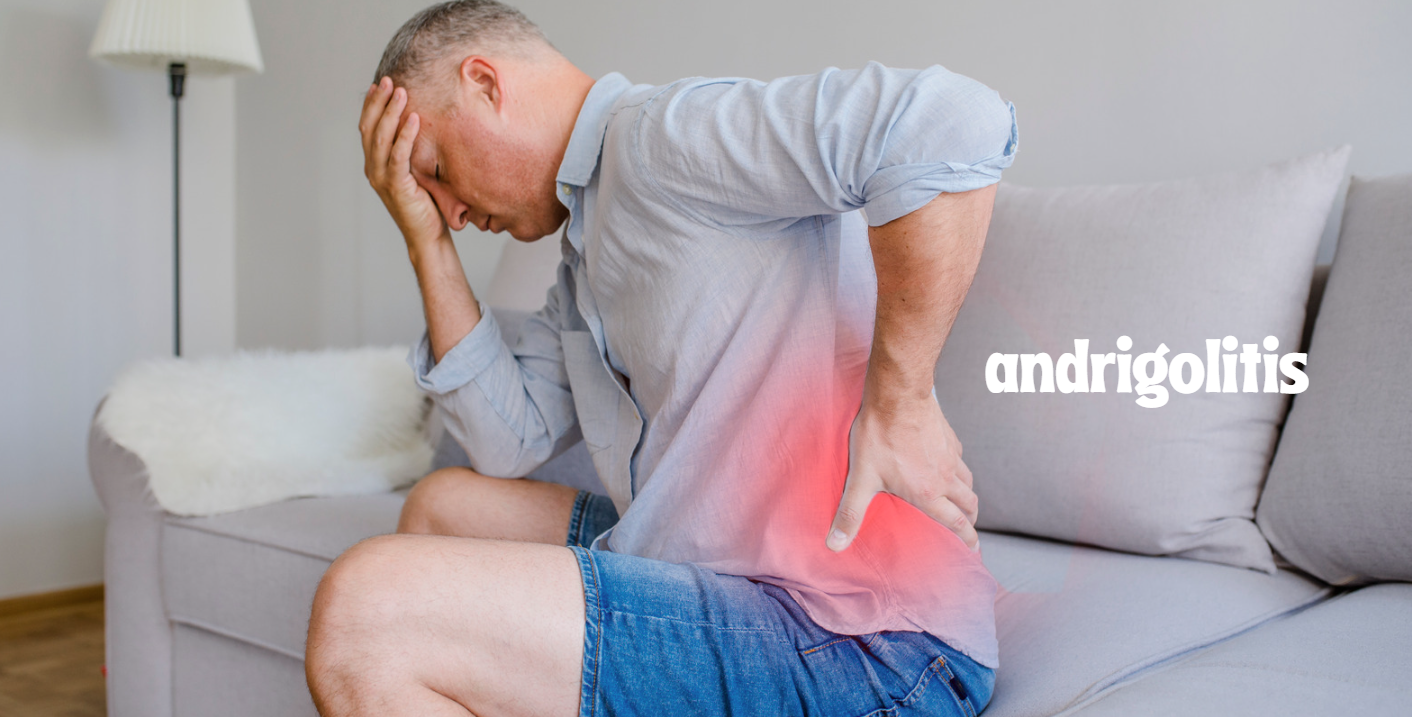Understanding Andrigolitis: Causes, Symptoms, Diagnosis, and Treatment
Andrigolitis is a medical condition characterized by the inflammation and irritation of specific tissues. Despite being relatively unknown, this condition has drawn increasing attention in recent years due to its impact on patients’ overall quality of life.
For those experiencing unexplained pain, discomfort, or swelling in certain tissue areas, understanding the root cause, potential treatment options, and preventative measures related to andrigolitis is crucial.
This comprehensive guide provides a deep dive into andrigolitis, offering insight into the condition’s causes, symptoms, diagnosis, treatment options, and long-term management strategies.
We’ll also examine frequently asked questions (FAQs) and offer expert insights that go beyond what is currently available online, providing readers with a robust and informative resource for understanding and managing andrigolitis.

ALOS READ: The Ultimate Guide to Concheer Charger: Everything You Need to Know
1. What is Andrigolitis?
Andrigolitis is a condition marked by the inflammation and irritation of specific tissues, which can result in pain, swelling, and a variety of other symptoms. While the medical community continues to research the exact mechanisms behind andrigolitis, the general consensus is that it is an inflammatory condition that affects soft tissues, often leading to localized discomfort.
This condition may manifest in various parts of the body, although it is most commonly associated with soft tissues surrounding muscles, joints, or tendons. Inflammation caused by andrigolitis can lead to the deterioration of these tissues over time, contributing to chronic pain if left untreated.
A Deeper Look into Andrigolitis
Though andrigolitis is not as widely recognized as some other inflammatory conditions like arthritis or tendonitis, its effects can be just as debilitating. The condition can occur due to various triggers, including infection, injury, or autoimmune disorders. Understanding the root causes of andrigolitis is essential for developing an effective treatment plan.
2. Causes of Andrigolitis
One of the most pressing questions for patients dealing with andrigolitis is what causes the condition. While medical research is ongoing, experts have identified several potential factors that could contribute to the development of andrigolitis. These factors include:
a. Injury and Trauma
One common cause of andrigolitis is injury or trauma to a specific area of the body. When tissues are damaged, the body initiates an inflammatory response to repair the damage. In some cases, this inflammation persists, leading to the development of chronic conditions like andrigolitis.
b. Autoimmune Disorders
Autoimmune disorders, where the body’s immune system mistakenly attacks healthy tissues, have also been linked to andrigolitis. Conditions like lupus and rheumatoid arthritis can trigger excessive inflammation, potentially leading to andrigolitis as a secondary complication.
c. Infections
In some cases, infections can lead to andrigolitis. Bacterial, viral, or fungal infections can inflame the body’s tissues as part of an immune response. If this inflammation is not properly managed, it could lead to chronic andrigolitis.
d. Genetic Predisposition
Genetics may play a role in determining whether an individual is more susceptible to inflammatory conditions like andrigolitis. People with a family history of inflammatory diseases may have an increased likelihood of developing the condition.
e. Environmental Factors
Environmental factors such as exposure to toxins, pollution, or certain allergens can also contribute to the onset of andrigolitis. These external triggers may cause the body to react with inflammation, particularly in susceptible individuals.

ALOS READ: The Ultimate Guide to Concheer Charger: Everything You Need to Know
3. Common Symptoms of Andrigolitis
The symptoms of andrigolitis can vary widely depending on the tissues affected and the severity of the inflammation. Some patients may experience mild discomfort, while others may suffer from more debilitating symptoms that impact their daily lives.
a. Pain
Pain is one of the most common symptoms of andrigolitis. The pain may be localized to the affected tissue or spread to nearby areas. It can range from a dull ache to sharp, severe pain, particularly during movement or physical activity.
b. Swelling
Inflammation often leads to visible swelling in the affected areas. This swelling may make it difficult to move or use the affected body part, depending on where the inflammation is located.
c. Redness and Warmth
In many cases, the inflamed tissue may appear red and feel warm to the touch. These symptoms are a direct result of increased blood flow to the affected area as the body responds to inflammation.
d. Limited Range of Motion
If andrigolitis affects joints or tendons, it may cause stiffness and restrict the range of motion. For instance, someone with andrigolitis in their knees or wrists may struggle to fully extend or bend these joints.
e. Fatigue and Malaise
Chronic inflammation, including that associated with andrigolitis, can cause fatigue and a general sense of malaise. This is due in part to the body’s immune response being in a constant state of activation.
4. Diagnosing Andrigolitis: What to Expect
If you suspect that you may have andrigolitis, it’s important to seek medical attention for a proper diagnosis. Diagnosing this condition can be challenging because its symptoms often mimic those of other inflammatory diseases, such as arthritis or tendonitis.
a. Medical History and Physical Examination
Your healthcare provider will begin by taking a thorough medical history, asking about your symptoms, potential triggers, and any prior injuries or autoimmune conditions. A physical examination will also be performed to assess the affected areas for signs of inflammation, swelling, or tenderness.
b. Imaging Studies
Imaging studies, such as X-rays, MRIs, or ultrasounds, may be used to assess the extent of the inflammation and rule out other potential causes of your symptoms, such as fractures or soft tissue tears.
c. Blood Tests
Blood tests can help identify markers of inflammation in your body, such as elevated levels of C-reactive protein (CRP) or erythrocyte sedimentation rate (ESR). These tests can also check for signs of infection or autoimmune disease, which may be contributing to your andrigolitis.
d. Biopsy
In rare cases, a tissue biopsy may be necessary to determine the underlying cause of the inflammation. This involves taking a small sample of tissue from the affected area for analysis.

ALOS READ: The Ultimate Guide to Concheer Charger: Everything You Need to Know
5. Treatment Options for Andrigolitis
Once andrigolitis has been diagnosed, your healthcare provider will recommend a treatment plan tailored to the severity of your condition. Treatment typically focuses on reducing inflammation, managing pain, and preventing further tissue damage.
a. Medications
1. Anti-Inflammatory Drugs
Nonsteroidal anti-inflammatory drugs (NSAIDs), such as ibuprofen or naproxen, are often prescribed to reduce inflammation and alleviate pain. These medications work by blocking the enzymes that produce inflammatory chemicals in the body.
2. Corticosteroids
In cases of severe andrigolitis, corticosteroids may be prescribed to suppress the immune system and reduce inflammation more aggressively. These medications can be administered orally, through injection, or topically, depending on the affected tissue.
3. Immunosuppressants
For patients whose andrigolitis is linked to autoimmune disorders, immunosuppressant medications may be necessary to prevent the immune system from attacking healthy tissues.
b. Physical Therapy
Physical therapy is often recommended to help restore mobility and strength in areas affected by andrigolitis. A trained physical therapist can guide you through exercises designed to reduce stiffness and improve your range of motion.
c. Surgery
In rare and severe cases, surgical intervention may be required to remove damaged tissue or repair structures affected by chronic inflammation. Surgery is typically considered a last resort after other treatment options have been exhausted.
d. Lifestyle Modifications
In addition to medical treatment, lifestyle modifications can play a significant role in managing andrigolitis. Adopting a healthy diet, maintaining a regular exercise routine, and managing stress can all help reduce inflammation and improve your overall well-being.
6. Long-Term Management and Coping Strategies
Managing andrigolitis is often a long-term process, especially for individuals with chronic or recurring inflammation. By following your prescribed treatment plan and adopting healthy habits, you can mitigate the impact of the condition on your daily life.
a. Pain Management
For patients dealing with chronic pain, developing a pain management plan with your healthcare provider is crucial. This may include a combination of medications, physical therapy, and alternative treatments like acupuncture or massage.
b. Monitoring Symptoms
Regularly monitoring your symptoms can help you and your healthcare provider make informed decisions about adjusting your treatment plan. Keeping a symptom diary can be useful in tracking flare-ups and identifying potential triggers.
c. Support Networks
Living with a chronic inflammatory condition can be challenging both physically and emotionally. Building a strong support network of friends, family, and healthcare providers can help you manage the mental and emotional toll of andrigolitis.
ALOS READ: The Ultimate Guide to Concheer Charger: Everything You Need to Know
7. Lifestyle Adjustments for People with Andrigolitis
Incorporating lifestyle changes can be an effective way to manage and reduce the symptoms of andrigolitis. While these changes may not replace medical treatment, they can significantly improve your quality of life and potentially reduce the frequency of flare-ups.
a. Anti-Inflammatory Diet
Adopting an anti-inflammatory diet rich in fruits, vegetables, lean proteins, and omega-3 fatty acids can help reduce overall inflammation in the body. Foods like fatty fish, nuts, seeds, and leafy greens are particularly beneficial for individuals with andrigolitis.
b. Regular Exercise
While vigorous exercise can sometimes exacerbate inflammation, low-impact activities like swimming, walking, and yoga can help maintain joint flexibility and improve circulation. Regular exercise also promotes overall health, which can positively influence your body’s ability to manage inflammation.
c. Stress Reduction
Chronic stress can trigger or worsen inflammation. Practicing stress-reduction techniques like meditation, deep breathing, and mindfulness can help calm the body’s inflammatory response and reduce the frequency of andrigolitis flare-ups.
8. Research and Developments in Andrigolitis Treatment
Ongoing research into andrigolitis is focused on understanding the underlying causes of the condition and developing more effective treatments. Some promising areas of research include:
a. Biologic Therapies
Biologic drugs that target specific inflammatory pathways are being explored as potential treatments for andrigolitis. These therapies may offer more targeted relief with fewer side effects compared to traditional anti-inflammatory medications.
b. Genetic Research
Researchers are also investigating the genetic factors that contribute to andrigolitis. Understanding the genetic predisposition to inflammatory conditions could lead to personalized treatment options and preventative measures.
c. Holistic Treatments
There is growing interest in the use of holistic treatments, such as herbal supplements and acupuncture, to manage andrigolitis. While more research is needed in this area, some patients report improvements in their symptoms with alternative therapies.
9. Andrigolitis and Its Impact on Daily Life
Living with andrigolitis can be challenging, particularly when it comes to managing symptoms and maintaining an active lifestyle. For many patients, the condition can lead to reduced mobility, chronic pain, and emotional stress. However, with proper treatment and management, it is possible to minimize the impact of andrigolitis on daily life.
10. Frequently Asked Questions (FAQs) about Andrigolitis
Q1: What is the main cause of andrigolitis?
- A: There is no single cause of andrigolitis, but it is often triggered by injury, autoimmune disorders, infections, or environmental factors that lead to chronic tissue inflammation.
Q2: How is andrigolitis treated?
- A: Treatment options include anti-inflammatory medications, corticosteroids, physical therapy, and, in severe cases, surgery. Lifestyle changes, such as adopting an anti-inflammatory diet and reducing stress, can also help manage symptoms.
Q3: Can andrigolitis be cured?
- A: There is currently no cure for andrigolitis, but symptoms can often be effectively managed with a combination of medical treatment and lifestyle modifications.
Q4: Is andrigolitis a life-threatening condition?
- A: Andrigolitis is typically not life-threatening, but it can significantly impact quality of life due to chronic pain and reduced mobility. Early diagnosis and treatment are key to preventing complications.
Q5: Can stress make andrigolitis worse?
- A: Yes, stress can exacerbate inflammation and lead to flare-ups in individuals with andrigolitis. Stress management techniques, such as meditation or yoga, can help reduce the frequency and severity of symptoms.
- ALOS READ: The Ultimate Guide to Concheer Charger: Everything You Need to Know
11. Conclusion: Managing and Living with Andrigolitis
Andrigolitis is a condition that, while not widely known, can have a significant impact on the lives of those who suffer from it. The key to managing andrigolitis is a comprehensive approach that includes proper medical treatment, lifestyle modifications, and emotional support.
By understanding the causes, symptoms, and available treatments, individuals with andrigolitis can take steps to improve their quality of life and minimize the effects of chronic inflammation.
Whether you are dealing with mild symptoms or a more severe case, staying informed and working closely with healthcare providers is essential to managing this condition. With ongoing research and new treatment developments, there is hope for improved outcomes and better quality of life for those living with andrigolitis.
ALOS READ: The Ultimate Guide to Concheer Charger: Everything You Need to Know






